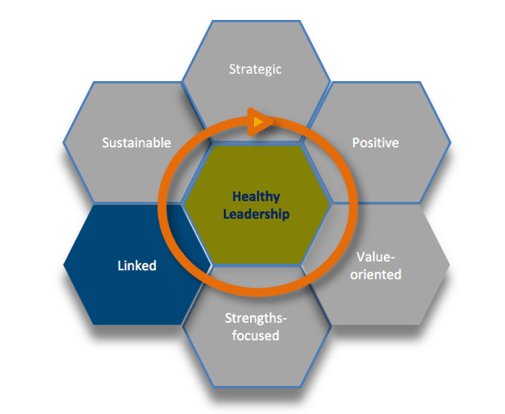Cross-linked leadership in the Healthy Organisation (6/7)
Maybe you are familiar with this wonderful example: the residents of the Hebrides in Northern Scotland deliberately placed lice in their hair to get healthy. The background is, every time they became sick, there were no lice in their hair. As soon as they had recovered, the lice were back. This led to the wrong causality, that lice are good for their health. In reality they mixed up cause and effect: the lice left the head of the sick, because they had fever and it was simply too hot for them. As soon as the head had cooled down, the lice were back immediately.
In everyday work life it is often similar. Do motivated employees really perform better or are people more motivated because the business is doing well? People tend to mix up cause and effect and we tend to see and believe only that which we want to see and believe. If I believed for example, that people are lazy by nature I will behave differently than if I believed that they are willing to perform by nature.
In this connection cross-linked leadership (see the figure below) to us means systemic leadership. Systemic in the sense of “affecting the total organism“. This shall mean that everything is related to everything and reciprocally effects each other. Instead of monocausal thinking (cause - effect),circular thinking. After all the whole is more than the sum of its parts. Cross-linked leadership also means to think in consequences.
The problem is often that the short-term advantage seems more lucrative than the long-term benefit. Let´s take as an example the oil platform Brent Spar (in order not to talk about the current VW case), which was operated by Shell. It was supposed to be sunk in 1995, which was seen as being the economically most senseful thing to do. The results of a sinking were considered to be relatively small for the environment. The Shell managers had forgotten to take the environmental organizations into account, however. They blew up a storm and provided for a devastating public image of Shell and a drop in sales of 50% (!). In the end Shell gave in and recycled the platform. If the former managers had thought in consequences and had taken into consideration the systemic dependency between their company, nature, society and the media, they could have foreseen the consequences.

However, cross-linked leadership also means trusting in self organisation. Less “command and control“, more self-responsibility and “empowerment“. This can release enormous amounts of power and lead to extraordinary performance. Instead of co-workers real co-entrepreneurs.
In order that this works out, organisation structures must be such that the customer and his demands are the starting point in the value-added chain. The total organisation is oriented towards the customer. “Customer centricity“ is the name of the corresponding marketing concept. It pursues a comprehensive approach, that by far not only touches the sales and marketing units of an organisation, but in which strategy, culture and structure are brought in line with focus on the customer.
With the following impulses you can make a start if you want:
- Orient your organisation/area/department/team consequently towards the demands of yourcustomer.
- Give responsibility to others and make sure that decisions can be made where the interface to the customer is located - that means decentralized.
- Equip your team/area with a high degree of self-responsibility - however, do not overstrain it either.
- Make sure that there is a as high as possible interconnection of the individual members of the organisation/area/department/team (knowledge transfer, interior design, meeting culture…).
- By means of a high interconnection within the organisation members create a transparency of who does what and why.
- Inspire your colleagues to perform a change in perspectives by defining roles instead ofpositions. One person can have several roles at the same time. Roles can change by rotation. This will improve the understanding among each other and upholds creativity andinnovative strength of the entire organisation in the long run.
Whenever you are faced with a challenging situation in the future, question the correlated causal interconnections. In the end “lice“ are not such a good idea for humans after all.

